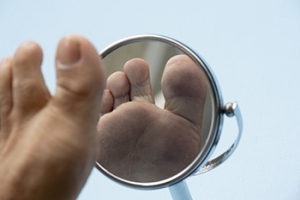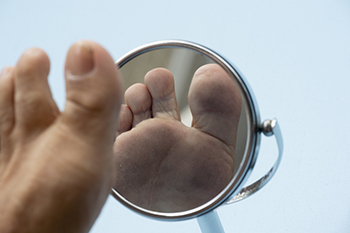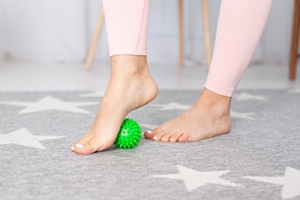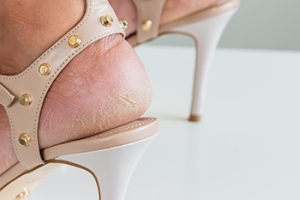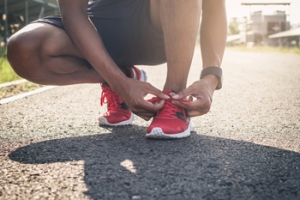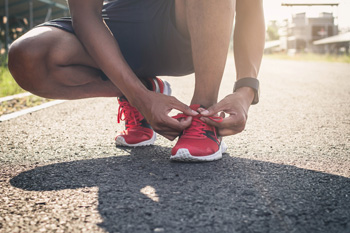
The Danger of Chronic Skin Wounds
A chronic skin wound fails to heal within a normal time frame or does not heal at all, or has healed and reoccurred. Chronic skin wounds are often a complication of diabetes or certain types of vascular disease, but they may also occur from trauma, surgery, deep burns, infection, skin cancers, and more. A chronic skin wound is a potentially dangerous condition and must be treated by a professional. A podiatrist should be consulted if you develop a chronic skin wound on your feet, ankles, or lower leg. After reviewing your medical history and performing a thorough physical exam, your podiatrist may need to perform and/or analyze different types of lab tests to identify the type of wound and its underlying factors. Podiatrists treat wounds with a variety of methods and procedures depending on their cause and severity and your health. If you have developed a fever or increased pain, or your wound is bleeding or has pus or other discharge, see a podiatrist immediately.
Wound care is an important part in dealing with diabetes. If you have diabetes and a foot wound or would like more information about wound care for diabetics, consult with one of our podiatrists from ABC Podiatry. Our doctors will assess your condition and provide you with quality foot and ankle treatment.
What Is Wound Care?
Wound care is the practice of taking proper care of a wound. This can range from the smallest to the largest of wounds. While everyone can benefit from proper wound care, it is much more important for diabetics. Diabetics often suffer from poor blood circulation which causes wounds to heal much slower than they would in a non-diabetic.
What Is the Importance of Wound Care?
While it may not seem apparent with small ulcers on the foot, for diabetics, any size ulcer can become infected. Diabetics often also suffer from neuropathy, or nerve loss. This means they might not even feel when they have an ulcer on their foot. If the wound becomes severely infected, amputation may be necessary. Therefore, it is of the upmost importance to properly care for any and all foot wounds.
How to Care for Wounds
The best way to care for foot wounds is to prevent them. For diabetics, this means daily inspections of the feet for any signs of abnormalities or ulcers. It is also recommended to see a podiatrist several times a year for a foot inspection. If you do have an ulcer, run the wound under water to clear dirt from the wound; then apply antibiotic ointment to the wound and cover with a bandage. Bandages should be changed daily and keeping pressure off the wound is smart. It is advised to see a podiatrist, who can keep an eye on it.
If you have any questions, please feel free to contact our office located in Columbus, OH . We offer the newest diagnostic and treatment technologies for all your foot care needs.
Wound Care
Diabetics must be wary of all wounds, regardless of depth or size. Diabetes, a chronic disease in which the body cannot properly use glucose the way it normally would, causes various complications that make wounds difficult to heal. Nerve damage or neuropathy will cause diabetics to have trouble feeling the pain of a blister or cut until the condition has significantly worsened or become infected. A diabetic’s weakened immune system can make even the most minor of wounds easily susceptible to infection. Diabetics are also more prone to developing narrow, clogged arteries, and are therefore more likely to develop wounds.
Wounds should be taken care of immediately after discovery, as even the smallest of wounds can become infected if enough bacteria build up within the wound. To remove dirt, wounds should be first rinsed under running water only. Soap, hydrogen peroxide, or iodine can irritate the injury and should be avoided. To prevent infection, apply antibiotic ointment to the wound and cover it with a bandage. The bandage should be changed daily. The skin around the wound may be cleaned with soap.
To prevent further exacerbation, see a doctor—especially if you have diabetes. Minor skin conditions can become larger problems if not properly inspected. As the wound heals, make sure to avoid applying pressure to the affected area.
A Tennis Ball and the Sole of the Feet
 There are many people who understand the benefits of exercising their feet. One way this can be accomplished is by using a tennis ball. This is done by rolling the bottom of the foot on the tennis ball, which may be beneficial in strengthening the overall foot. When this is practiced, it can help to release tension in the feet, and specific types of foot pain may gradually diminish. Research has indicated it may have a positive effect on the brain and nervous system. There are different points of the foot that correspond to specific internal organs. Improvement and good feelings may be noticed when these parts of the foot are massaged with a tennis ball. If you would like additional information about what size tennis ball to use that can help your feet, please ask a podiatrist.
There are many people who understand the benefits of exercising their feet. One way this can be accomplished is by using a tennis ball. This is done by rolling the bottom of the foot on the tennis ball, which may be beneficial in strengthening the overall foot. When this is practiced, it can help to release tension in the feet, and specific types of foot pain may gradually diminish. Research has indicated it may have a positive effect on the brain and nervous system. There are different points of the foot that correspond to specific internal organs. Improvement and good feelings may be noticed when these parts of the foot are massaged with a tennis ball. If you would like additional information about what size tennis ball to use that can help your feet, please ask a podiatrist.
Exercising your feet regularly with the proper foot wear is a great way to prevent injuries and build strength. If you have any concerns about your feet, contact one of our podiatrists from ABC Podiatry. Our doctors can provide the care you need to keep you pain-free and on your feet.
Exercise for Your Feet
Exercise for your feet can help you gain strength, mobility and flexibility in your feet. They say that strengthening your feet can be just as rewarding as strengthening another part of the body. Your feet are very important, and we often forget about them in our daily tasks. But it is because of our feet that are we able to get going and do what we need to. For those of us fortunate enough to not have any foot problems, it is an important gesture to take care of them to ensure good health in the long run.
Some foot health exercises can include ankle pumps, tip-toeing, toe rises, lifting off the floor doing reps and sets, and flexing the toes. It is best to speak with Our doctors to determine an appropriate regimen for your needs. Everyone’s needs and bodies are different, and the activities required to maintain strength in the feet vary from individual to individual.
Once you get into a routine of doing regular exercise, you may notice a difference in your feet and how strong they may become.
If you have any questions please feel free to contact our office located in Columbus, OH . We offer the newest diagnostic and treatment technologies for all your foot and ankle needs.
Exercise for Your Feet
Whether your feet are over-worked or under-worked, chances are they could benefit from some special attention. Even those who exercise regularly probably do not spend any time strengthening their feet. This can be just as rewarding as strengthening the rest of the body, since the health of your feet affects the health of the rest of the body as well, especially the ankles, legs, and spine.
For those who might not have any idea on how a foot-specific exercise might be conducted, there are several workouts that are fairly easy to perform in the comfort of ones’ home. One of the easiest is the toe rise, also known as the tip-toe. This exercise involves standing on the tip-toes for a count of 15 then resting the feet on the ground. This process should be repeated a minimum of three times a day in order to strengthen the feet.
Toe pick-ups strengthen the feet by working them in a very different way. In this exercise, small items are picked up using the toes in order to strengthen the muscles on the upper part of the feet. Once again three sets should be performed, with the item in question being held for 15 seconds then dropped. Items that may be picked up using the feet include marbles and even stationery, which works wonders for the toes and the surrounding muscles.
Yet another simple workout is the ankle pump. This can be done either upwards or downwards, but for the workout to be most effective both can be incorporated into the routine. As the term suggests, this involves lifting the foot off the floor and flexing the toes either towards the shin or towards the ground. This movement puts the feet and ankles through a large range of motion which works the muscles.
Last but not least, feet should be stretched so that the muscles can relax and recuperate. This can be done by placing both feet off of the floor and bracing oneself against the wall at a 45 degree angle. This ensures that the feet and ankles are adequately stretched once the workout is complete.
In short, giving the feet a good workout every now and then is important in order to avoid problems such as plantar fasciitis. It’s also important to warm-up or cool-down after running or vigorous walking. Foot exercises may be followed by a good foot massage. This encourages circulation in the feet as well as muscle relaxation.
The Pesky Plantar Wart
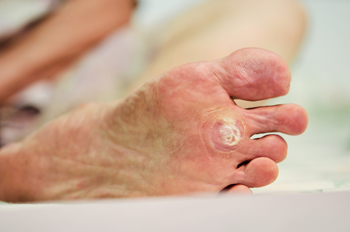 Viral infections caused by the human papillomavirus (HPV) that enter the skin of the feet can cause plantar warts. These are fleshy growths that typically form on the bottom of the feet. The pressure from walking can cause plantar warts to be painful. Plantar warts can grow individually, or they may cluster in what is known as a mosaic. They present as flat, circular, grainy patches of skin that can be small or large. A tiny black blood vessel, appearing as a dot, is often visible in the center of a plantar wart, which can often distinguish it from other types of growths. HPV is a highly contagious virus that can be spread from direct contact, or through exposure to the virus living on infected surfaces, such as communal showers, locker rooms, towels, shoes, socks, and more. Plantar warts are hearty and difficult to treat on your own. They are known to return if they are not properly treated. For these reasons, plantar warts often require professional care from a podiatrist. Make an appointment with a podiatrist if you or someone you love has developed one or more plantar warts.
Viral infections caused by the human papillomavirus (HPV) that enter the skin of the feet can cause plantar warts. These are fleshy growths that typically form on the bottom of the feet. The pressure from walking can cause plantar warts to be painful. Plantar warts can grow individually, or they may cluster in what is known as a mosaic. They present as flat, circular, grainy patches of skin that can be small or large. A tiny black blood vessel, appearing as a dot, is often visible in the center of a plantar wart, which can often distinguish it from other types of growths. HPV is a highly contagious virus that can be spread from direct contact, or through exposure to the virus living on infected surfaces, such as communal showers, locker rooms, towels, shoes, socks, and more. Plantar warts are hearty and difficult to treat on your own. They are known to return if they are not properly treated. For these reasons, plantar warts often require professional care from a podiatrist. Make an appointment with a podiatrist if you or someone you love has developed one or more plantar warts.
Plantar warts can be very uncomfortable. If you need your feet checked, contact one of our podiatrists from ABC Podiatry. Our doctors will assist you with all of your foot and ankle needs.
About Plantar Warts
Plantar warts are the result of HPV, or human papillomavirus, getting into open wounds on the feet. They are mostly found on the heels or balls of the feet.
While plantar warts are generally harmless, those experiencing excessive pain or those suffering from diabetes or a compromised immune system require immediate medical care. Plantar warts are easily diagnosed, usually through scraping off a bit of rough skin or by getting a biopsy.
Symptoms
- Lesions on the bottom of your feet, usually rough and grainy
- Hard or thick callused spots
- Wart seeds, which are small clotted blood vessels that look like little black spots
- Pain, discomfort, or tenderness of your feet when walking or standing
Treatment
- Freezing
- Electric tool removal
- Laser Treatment
- Topical Creams (prescription only)
- Over-the-counter medications
To help prevent developing plantar warts, avoid walking barefoot over abrasive surfaces that can cause cuts or wounds for HPV to get into. Avoiding direct contact with other warts, as well as not picking or rubbing existing warts, can help prevent the further spread of plantar warts. However, if you think you have developed plantar warts, speak to your podiatrist. He or she can diagnose the warts on your feet and recommend the appropriate treatment options.
If you have any questions please feel free to contact our office located in Columbus, OH . We offer the newest diagnostic and treatment technologies for all your foot and ankle needs.
What Are Plantar Warts?
Plantar warts are described as small growths that appear on the heels or other areas of the feet that bear a large amount of weight. The pressure in these areas causes plantar warts to hide behind thick layers of skin called calluses. In most cases, plantar warts are not a serious health issue, and they usually go away without treatment. However, it is still important be mindful of them.
Plantar warts are caused by infections with human papillomavirus (HPV) in the outer layer of skin on the soles of the feet. The plantar warts then develop when the virus enters the body through weak spots at the bottom of the feet, such as tiny cuts and breaks. Plantar warts are not guaranteed for all who encounter the virus. Everyone responds differently to the affects of HPV.
Plantar warts are most common in the following groups: children and teenagers, people with weakened immune systems, people with history of plantar warts, and people who walk barefoot. Exposure to HPV is common in environments such as locker rooms or pool areas.
One of early signs to look out for is a callus, since many plantar warts hide behind them. You can also locate these warts by looking for small, fleshy, rough, grainy growths near the base of the toes and the heel. Early signs of plantar warts are shown by black pinpoints, which are small, clotted blood vessels. Lesions that interrupt normal lines and ridges in the skin of your foot may also be a sign of plantar warts. Any feeling of pain while walking or standing can also be a symptom of plantar warts.
Although most cases are not serious, some conditions may require a visit to your podiatrist. If you are uncertain that your lesion is a wart, if you have diabetes, or if you are experiencing bleeding, you may need to see a seek professional treatment. Your doctor may offer treatments such as prescribing stronger peeling medicine or using cryotherapy by applying liquid nitrogen to the wart. More serious cases may require minor surgery or laser treatment.
There are simple solutions available to help prevent plantar warts. One common task is to avoid walking barefoot in swimming pool areas and locker rooms, as this is where HPV is commonly present. Keeping your feet clean and dry, while changing shoes and socks daily can also help prevent future plantar warts. If you know someone who has plantar warts, it is important to avoid direct contact with their warts. You should also refrain from picking or scratching your wart if you happen to develop one.
Possible Causes of Cracked Heels
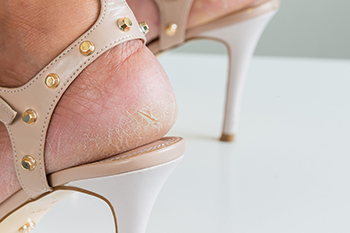 Many patients experience the uncomfortable foot condition that is referred to as cracked heels. It can be caused by living in a dry climate or it may develop from specific medical conditions, including eczema and psoriasis. Additionally, patients can have cracked heels from wearing shoes that have an open back. Relief may be found when the feet are washed and dried thoroughly, followed by using a good moisturizer. It can help to drink plenty of fresh water daily, in addition to wearing shoes that are made of breathable materials. Cracked heels can become painful so it is suggested that you schedule an appointment with a podiatrist who can offer you correct treatment solutions.
Many patients experience the uncomfortable foot condition that is referred to as cracked heels. It can be caused by living in a dry climate or it may develop from specific medical conditions, including eczema and psoriasis. Additionally, patients can have cracked heels from wearing shoes that have an open back. Relief may be found when the feet are washed and dried thoroughly, followed by using a good moisturizer. It can help to drink plenty of fresh water daily, in addition to wearing shoes that are made of breathable materials. Cracked heels can become painful so it is suggested that you schedule an appointment with a podiatrist who can offer you correct treatment solutions.
If the skin on your feet starts to crack, you may want to see a podiatrist to find treatment. If you have any concerns, contact one of our podiatrists from ABC Podiatry. Our doctors can provide the care you need to keep you pain-free and on your feet.
Cracked Heels
It is important to moisturize your cracked heels in order to prevent pain, bleeding, and infection. The reason cracked heels form is because the skin on the foot is too dry to support the immense pressure placed on them. When the foot expands, the dry skin on the foot begins to split.
Ways to Help Heal Them
- Invest in a good foot cream
- Try Using Petroleum Jelly
- Ease up on Soaps
- Drink Plenty of Water
Ways to Prevent Cracked Heels
- Moisturize After Showering
- Skip a Shower
- Keep Shower Water Lukewarm
- Don’t Scrub Your Feet
If you are unsure how to proceed in treating cracked heels, seek guidance from a podiatrist. Your doctor will help you with any questions or information you may need.
If you have any questions, please feel free to contact our office located in Columbus, OH . We offer the newest diagnostic and treatment technologies for all your foot care needs.
Solutions for Cracked Heels
Cracked heels may make you want to think twice about showing off your feet in warmer weather. However, cracked heels may be harmful to more than just the appearance of your feet. If deep fissures and cracks develop in your heels, they may make walking and standing painful for you. Additionally, these openings make way for germs to enter through your skin and cause infection.
There are several different causes of cracked heels. One of the most common reasons for this ailment is dry skin. This problem may make your keeps feel rough tight and itchy. Dry skin may be caused by cold air, extremely hot water, harsh soaps, and aging. Skin disorders such as eczema and psoriasis may eventually lead to dry skin. In some cases, complications may arise from cracked heels. Some of these complications are a loss of feeling in the heel, cellulitis, or a diabetic foot ulcer.
There are ways you can try to prevent getting cracked heels. One of the best ways to do so is to avoid wearing flip flops and sandals because these shoes increase your risk of drying out your feet. You should also avoid wearing shoes with a tall skinny heel, because these shoes cause your heel to expand sideways. At night, you should slather on a thick moisturizing cream on your feet and then cover them in socks to keep your feet moisturized overnight. Drinking water to stay hydrated is also a good way to ensure that your skin doesn’t become dry.
If you suffer from a severe case of cracked feet, you should make an appointment with your podiatrist to see what treatment methods are best for you.
The 5 Types of Running Shoes
Finding the right running shoe to accommodate your foot structure and prevent injury can be a daunting task, particularly if you are a beginner. Here is a brief introduction of the 5 types of running shoes. 1) Racing Flats are lightweight shoes built for long distance and speed with far less cushioning than those made for more general training. They are not appropriate if you are just starting out. 2) Trail Runners are protective and stable running shoes made to accommodate the changing terrain you would encounter in nature (mud, road, grass, hard packed surfaces). 3) Stability Sneakers, made for people with normal arches, support the arch and ankle during the gait cycle and help prevent the foot from overpronation (extreme inward rolling). 4) Motion Control Shoes have a more rigid construction which can help avoid overpronation in people with low arches or with pronation problems. Heavier runners may benefit also from their extra stability and durability. 5) Cushioned Shoes, or neutral padded shoes, can help runners that do not pronate sufficiently during the gait cycle, which may help those with high arches. This footwear offers extra shock absorption in the midsole and outsole. For more individualized advice on the specific features that would be most beneficial for your individual feet and fitness goals, consult with a podiatrist.
You should always make sure your running shoes fit properly in order to avoid injury. For more information, contact one of our podiatrists from ABC Podiatry. Our doctors can provide the care you need to keep you pain-free and on your feet.
Choosing the Right Running Shoe for Your Foot Type
Improper shoe sizing can cause a myriad of problems for your feet. Shoes that don’t fit you properly can lead to muscular imbalances in your body, which can result in foot, knee, and hip injuries.
Tips for Finding the Right Running Shoe
- Make sure you have a thumb’s width of wiggle room between the end of your longest toe and the front of the shoe.
- There should be little to no slipping at the heel
- Don’t assume your size in one shoe brand will be your size in another
- Do not lace up your shoes too tightly
- Walk around in the store with your new shoes before you buy them
If you have any questions please feel free to contact our our office located in Columbus, OH . We offer the newest diagnostic and treatment technologies for all your foot and ankle needs.
